When we think of birds, most people imagine colorful feathers, melodious songs, and diets consisting mainly of seeds or fruits. However, not all avian birds are herbivores or omnivores—many are skilled hunters and scavengers. 10 meat eating birds rely on a carnivorous diet to survive, consuming prey such as insects, fish, small mammals, and even other birds. These birds have specialized beaks, talons, and hunting techniques that help them capture and consume their prey efficiently. The nutritional benefits of meat, including high-quality protein, fats, and essential minerals, are vital for their energy and physical development. In this guide, we explore 10 meat eating birds, detailing their habitats, diets, and unique adaptations. From powerful raptors to opportunistic scavengers, these 10 meat eating birds play a crucial role in maintaining ecological balance. Let’s dive into the top 10 birds that eat meat, detailing their habitats, diets, and unique traits.
1. Bald Eagle
Scientific Name: Haliaeetus leucocephalus
Habitat: Found near rivers, lakes, and coastal regions across North America.
Diet: Primarily fish, but also small mammals, birds, and carrion.
Detail: Known for its sharp vision and powerful talons, the bald eagle is a symbol of strength and freedom. These apex predators rely on their keen eyesight to spot prey from high above.

2. Peregrine Falcon
Scientific Name: Falco peregrinus
Habitat: Worldwide, except for extreme polar regions.
Diet: Birds, including pigeons and ducks, caught mid-flight.
Detail: The peregrine falcon is the fastest bird on Earth, capable of reaching speeds of up to 240 mph during a dive. It’s a master of aerial hunting.
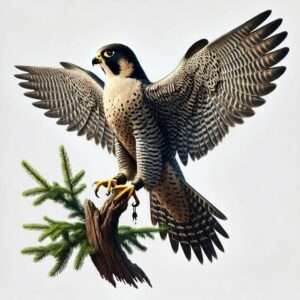
3. Cassowary
Scientific Name: Casuarius spp.
Habitat: Tropical rainforests of Australia, New Guinea, and surrounding islands.
Diet: Primarily frugivorous but opportunistic, occasionally consuming small animals and carrion.
Detail: Known for its striking appearance and powerful legs, the cassowary is a flightless bird that plays a crucial role in seed dispersal. Despite its mainly fruit-based diet, it won’t hesitate to consume small creatures or carrion when necessary, showcasing its adaptability.

4. Great Horned Owl
Scientific Name: Bubo virginianus
Habitat: Forests, deserts, and urban areas in the Americas.
Diet: Small mammals, birds, and insects.
Detail: Known for its tufted “horns” of feathers, this nocturnal predator hunts silently, thanks to its specialized flight feathers.
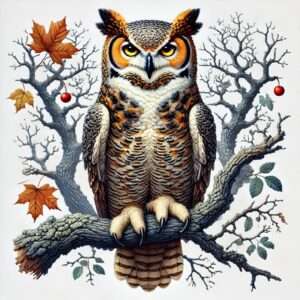
5. Golden Eagle
Scientific Name: Aquila chrysaetos
Habitat: Mountains, deserts, and open grasslands of the Northern Hemisphere.
Diet: Mammals like rabbits, marmots, and even deer fawns.
Detail: One of the largest and most powerful birds of prey, the golden eagle’s hunting prowess is legendary.
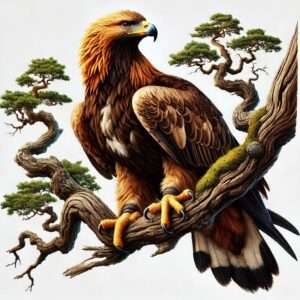
6. Secretary Bird
Scientific Name: Sagittarius serpentarius
Habitat: African savannas and grasslands.
Diet: Snakes, lizards, and rodents.
Detail: Unlike most birds of prey, the secretary bird hunts on foot, delivering powerful kicks to incapacitate its prey.
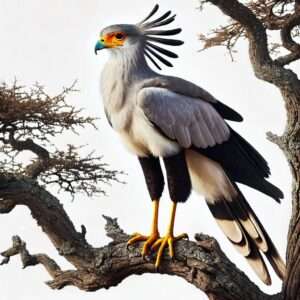
7. Andean Condor
Scientific Name: Vultur gryphus
Habitat: Andes Mountains and coastal regions of South America.
Diet: Carrion.
Detail: As one of the world’s largest flying birds, the Andean condor plays a vital ecological role by cleaning up animal carcasses.

8. Harpy Eagle
Scientific Name: Harpia harpyja
Habitat: Rainforests of Central and South America.
Diet: Monkeys, sloths, and other mammals.
Detail: Known for its enormous size and strength, the harpy eagle’s talons are as large as a human hand, allowing it to snatch heavy prey.

9. Osprey
Scientific Name: Pandion haliaetus
Habitat: Near water bodies worldwide.
Diet: Primarily fish.
Detail: With reversible outer toes and sharp spines on its feet, the osprey is a specialized fish hunter, diving feet-first into water to catch its prey.
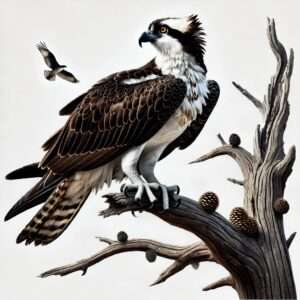
10. Northern Shrike
Scientific Name: Lanius borealis
Habitat: Boreal forests and open areas in North America and Eurasia.
Diet: Insects, small birds, and rodents.
Detail: Known as the “butcher bird,” the Northern Shrike impales its prey on thorns or barbed wire for storage, a behavior unique among birds.

Conclusion
This blog serves as an educational resource for anyone curious about the fascinating behaviours and adaptations of meat-eating birds. Each with their unique hunting methods and diets, highlights the incredible diversity of avian adaptations. By exploring their diets, habitats, and ecological roles, we aim to foster a greater understanding of these avian species and their importance in the natural world. Additionally, this content highlights the beauty of biodiversity and emphasizes the need to protect these incredible birds and their ecosystems.
- Anatomy
- Anesthesiology
- Animal Husbandry
- Animal Sciences
- Avian
- Camelidae
- Canine
- Cattle
- Clinical Medicine
- Clinical Pathology
- Clinical Sciences
- Clinical Surgery
- Dairy Technology
- Epidemiology
- Equine
- Feline
- Fun Facts
- Genetics
- Goat
- Medicine
- Microbiology
- Microbiology
- Non Ruminants
- Nutrition
- Parasitology
- Pathology
- Pharmacology
- Physiology
- Poultry Husbandry
- Public Health
- Radiology
- Reproduction
- Ruminants
- Sheep
- Uncategorized
- Veterinary Sciences
- Wild Animals
- Blue Tongue Disease in Sheep and Cattle
- Winter Guide: Keep Your Pets Safe and Warm During Winter
- Cattle Dogs: Intelligent Breeds for Active Families
- Bluetick Coonhound: A Dog Breed & Adaption Guide
- Heartworm (Dirofilaria) in Dogs: A Complete Vet Guide
